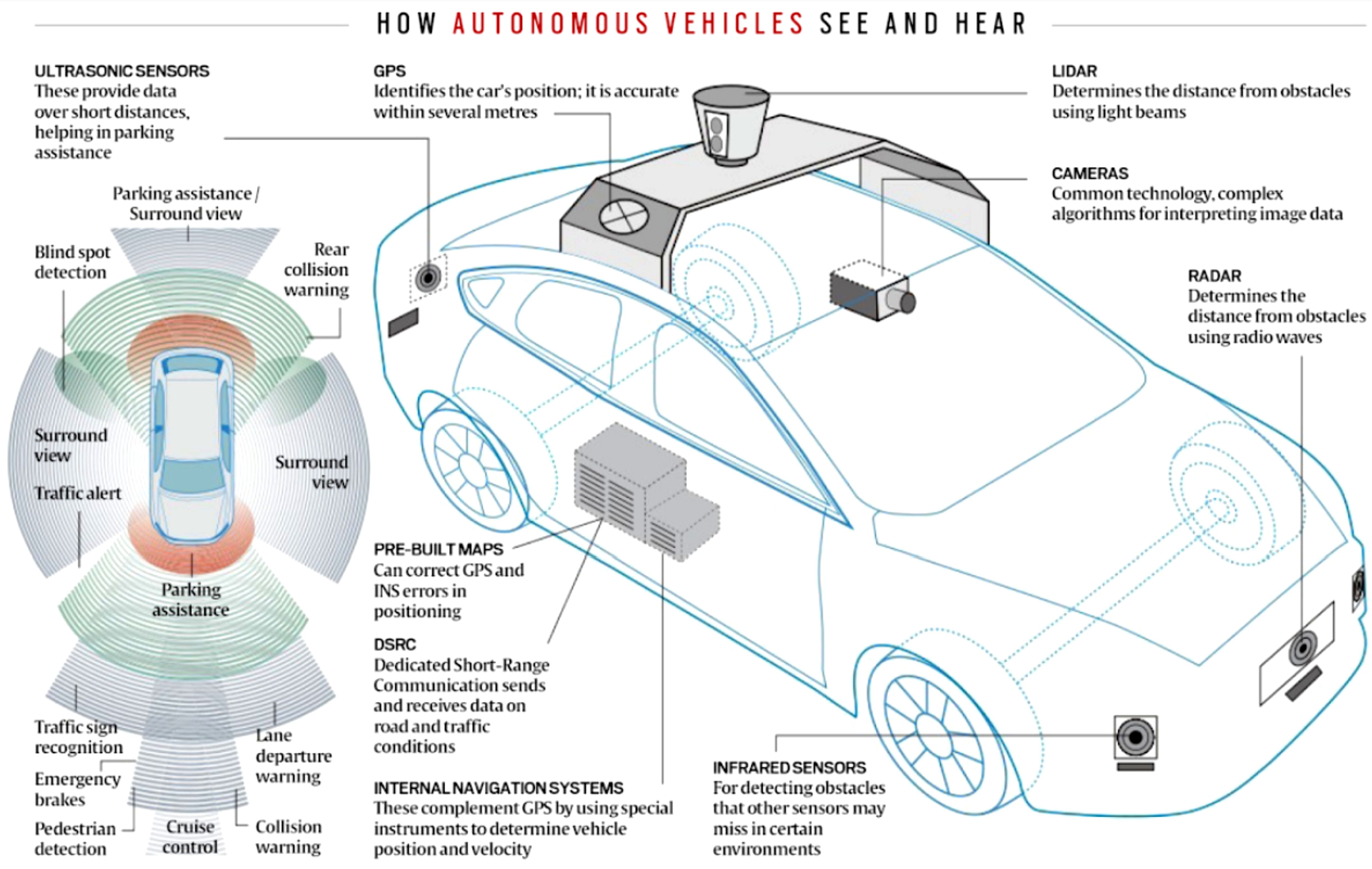Science & Technology
Self Driven Cars
- 07 May 2019
- 4 min read
Why in the news?
Recently, Elon Musk of Tesla Motors said that Tesla Robotaxis, which will run without humans, will be ready by 2020. However, a lawsuit has been initiated on 1st May by the family of a man killed by Tesla auto driven car last year, exposing limits of driver-less technology.
What are driver-less cars?
Self-driving vehicles are those vehicles in which human drivers are never required to take control to safely operate the vehicle. Also known as autonomous or “driverless” cars, they combine sensors and software to control, navigate, and drive the vehicle.
How do they work?
Most self-driving systems create and maintain an internal map of their surroundings, based on a wide array of sensors, like radar, laser beams, and infrared etc.
Software then processes those inputs, plots a path, and sends instructions to the vehicle’s “actuators,” which control acceleration, braking, and steering.
Hard-coded rules, obstacle avoidance algorithms, predictive modelling, and “smart” object discrimination (i.e., knowing the difference between a bicycle and a motorcycle) help the software follow traffic rules and navigate obstacles.
- The second approach uses Lidar — a remote sensing method that uses light in the form of a pulsed laser to measure variable distances and range — in addition to the traditional sensor suite of radar and camera systems. It requires more data-processing and computational power, but is more robust, especially in tight, traffic-heavy environments.
LIDAR, which stands for Light Detection and Ranging, is a remote sensing method that uses light in the form of a pulsed laser to measure ranges & variable distances. These light pulses—combined with other data recorded by the airborne system— generate precise, three-dimensional information about the shape of the Earth and its surface characteristics.
A LIDAR instrument principally consists of a laser, a scanner, and a specialized GPS receiver. Airplanes and helicopters are the most commonly used platforms for acquiring LIDAR data over broad areas.
What are the benefits of self driverless car?
- Safety: self-driving vehicles could, hypothetically, improve safety and reduce accidents—software could prove to be less error-prone than humans—but cyber security is still a chief concern.
- Equity: Self-driving technology could help mobilize individuals who are unable to drive themselves, such as the elderly or disabled and women.
- Environmental impacts: Accessible, affordable, and convenient self-driving cars could increase the total number of miles driven each year. If those vehicles are powered by fossil fuel, then transportation-related climate emissions could skyrocket. If, however, the vehicles are electrified—and paired with a clean electricity grid—then transportation emissions could drop.
Concerns
Widespread adoption of autonomous vehicles could displace millions of workers employed as drivers, negatively impact public transportation funding, and perpetuate the current transportation system’s injustices.
Technology can be trusted, unpredictability of humans cannot. In such a scenario, in a developing country where there is unplanned infrastructure and a scant regard for traffic rules, the feasibility of driverless cars is far-fetched.





